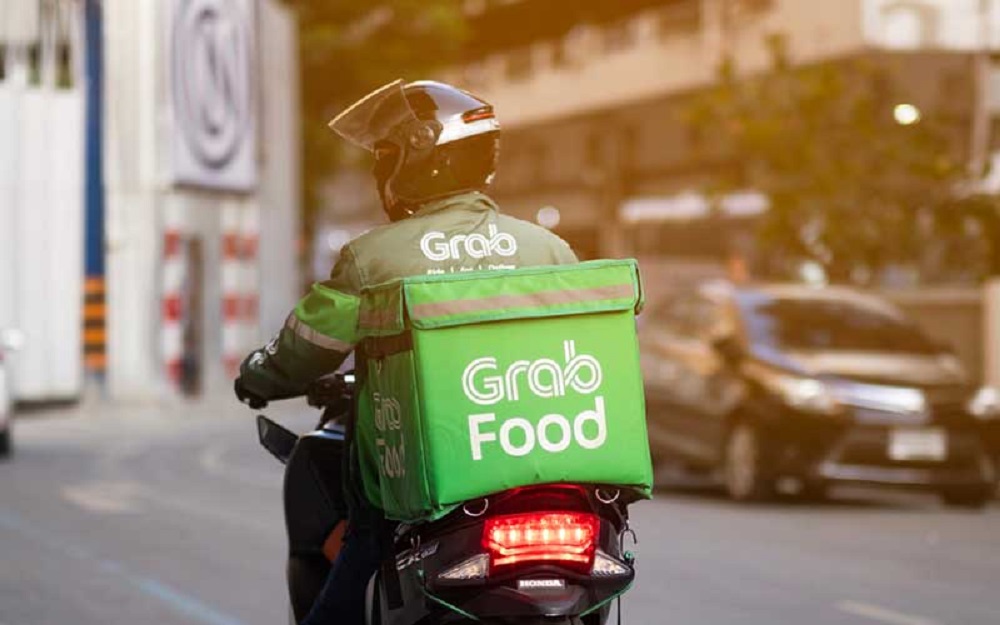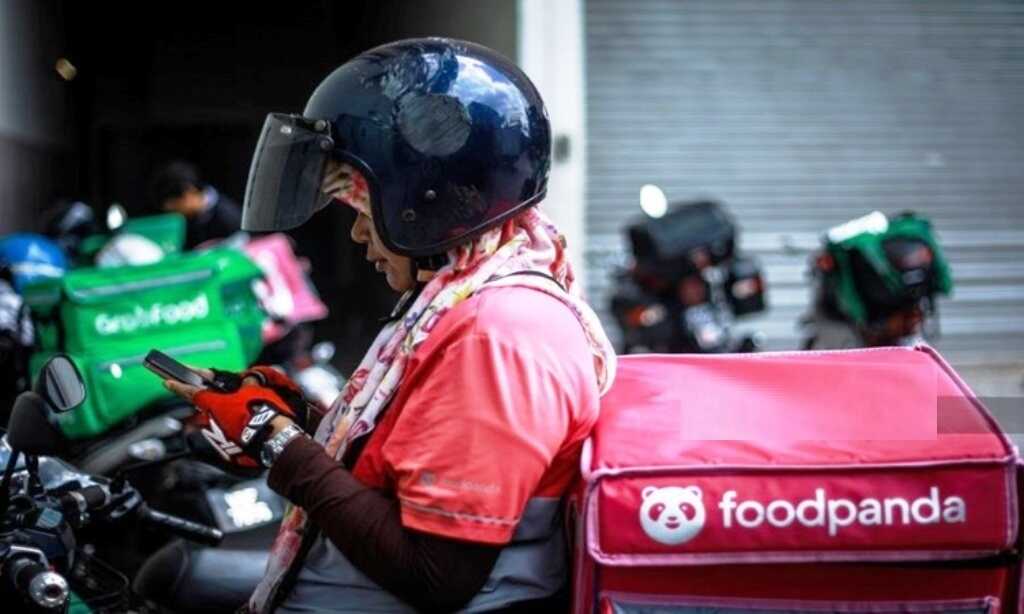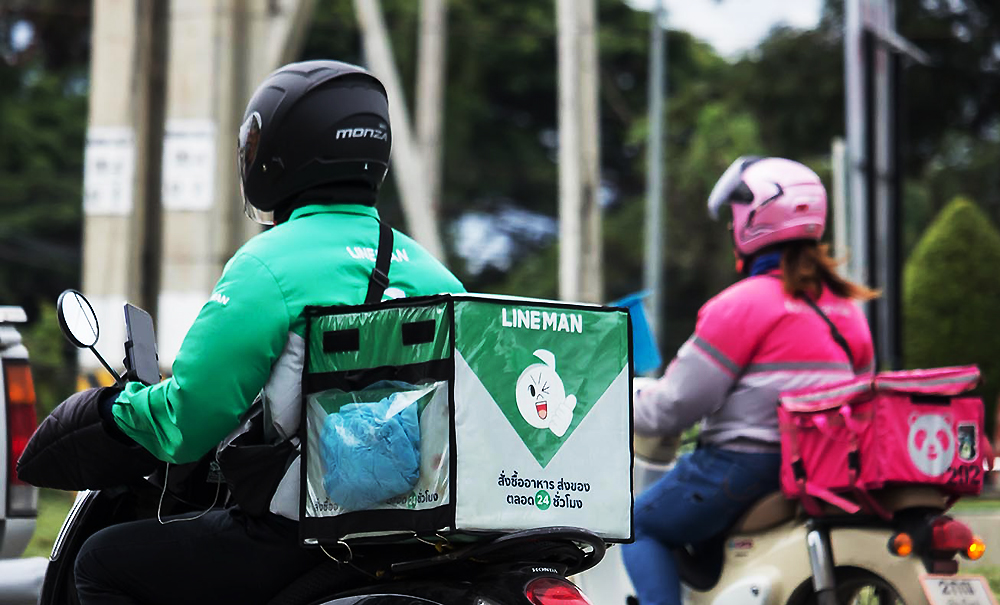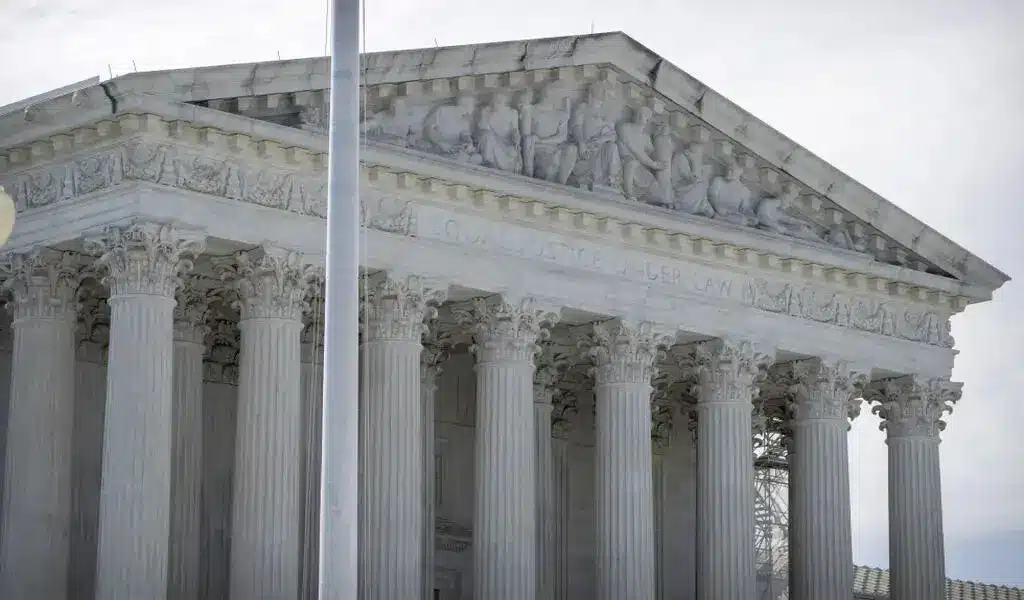News
Food Delivery Drivers in Thailand Seeing Their Incomes Plummet
Food delivery drivers in Thailand, one of Southeast Asia’s most competitive markets for “super apps” like Grab, are seeing their incomes plummet as platforms cut expenses amid harsh business conditions.
Grab Holdings, which controlled approximately 44 percent of the Thai market as of 2021, went public in New York in 2021 after a $39.6 billion merger with a blank cheque company.
However, despite being Southeast Asia’s most valuable digital unicorn, the Singapore-based start-up has struggled to cut losses and has yet to earn a profit.
Grab laid off over 1,000 employees in June, the most since 2020, when the company let off 360 employees. CEO Anthony Tan called the layoffs as a “painful but necessary step” to ensure the company’s future competitiveness.
Piti, a 26-year-old Bangkok resident, had little issue earning a living as a Grab delivery driver during the peak of the COVID-19 outbreak. Piti’s wages have plummeted after two years of carrying food to homes and workplaces, and he is considering changing occupations.

He claims that in recent months, he has received a beginning rate of 38 baht ($1.07) each food order, down from 40 baht ($1.12) previously. Worse, he is getting considerably fewer gigs as the number of cars on the road has increased dramatically.
“I used to earn around 2,000 baht [$57] per day, but now I only earn 900 baht [$25] on some days,” Piti, who requested anonymity to prevent reprisal, told Al Jazeera.
Piti intends to transition to using Grab’s ride-hailing service, which he claims pays a more attractive rate of 35 baht ($0.98) per kilometre.
Other meal delivery platforms have encountered similar challenges.
According to analytics firm Creden Data, Line Man, a delivery app developed by the Thai arm of Japan’s Line Corp., posted a loss of 2.7 billion baht ($75.9 million) last year, down 14 percent from 2021, despite boosting revenue 88 percent to 7.8 billion baht ($219 million).
According to the Kasikorn Research Centre, a Bangkok-based think tank, the market value of Thailand’s food delivery company would fall by 11.3 percent this year compared to 2022 as the volume of food orders drops following the epidemic.
Food delivery drivers for a variety of platforms who talked to Al Jazeera said they had received no explanation for the decrease in their pay.
Pon, a driver for multiple platforms including Robinhood, stated that his base salary per order has been decreased from 43 baht ($1.21) to 39 baht ($1.10). “I have spoken to friends on many platforms, and we have faced the same situation,” Pon, who requested anonymity, told Al Jazeera.
Pon, like many other drivers, switches between apps, sometimes even on the same day. Platforms like Grab, Foodpanda, Robinhood, and Line Man Wongnai all have similar pay structures: drivers are paid per delivery order and are compensated more for longer distances.

In some circumstances, incentives are presented to drivers in order to motivate them to fulfill revenue targets. With no defined wage, the more hours a driver works, the more money he or she earns.
“Rates are high during 11am-2pm and 5pm-7pm, especially when it’s raining because that’s when orders are at their highest,” Natee, a 39-year-old Foodpanda driver who requested anonymity, told Al Jazeera.
Natee, like other drivers, has seen his Foodpanda rates fall after quitting his manufacturing job after his boss failed to pay him overtime.
He supplements his income by delivering customers using Bolt, a ride-hailing app that will be available in Thailand in 2020.
“Many drivers have diversified their income streams by simultaneously working for multiple ride-hailing platforms,” Hilman Palaon, a digital economy expert at the Lowy Institute’s Indo-Pacific Development Centre in Australia, told Al Jazeera.
“This multifaceted engagement allows them to switch between platforms based on prevailing demand and pricing conditions.”
According to James Guild, an adjunct fellow at Singapore’s S Rajaratnam School of International Studies (RSIS), it’s not surprise that platforms will provide drivers a lesser revenue split than in the beginning.
“Their priority is now profitability, so we should expect less generous incentive schemes and revenue splits, as well as higher fees,” Guild told Al Jazeera.
“Grab needs to make some changes to its business model because it has been extremely unprofitable.” The question is who and where will shoulder the costs of these changes.”

Line Man Wongnai, a delivery arm of Thailand’s popular messaging service Line, said drivers’ fees typically change based to user demand in each area, the local economy, the level of competition, and the weather.
“Our latest adjustment in March did both rise and drop in different areas,” Isriya Paireepairit, vice president of public affairs at Line Man Wongnai, told Al Jazeera.
“In the central Bangkok area, where demand is very high, we raised the compensation.” The company refuses to comment on the wage cut.
Worachat Luxkanalode, managing director of Grab Thailand, stated in June that the platform grew once the country reopened following the pandemic.

He stated that meal delivery orders had remained high, aided in part by remote working, but that the platform was aiming to increase value per order by partnering with more restaurants and adding additional user promotions. Luxkanalode confessed that the meal delivery service was a loss-making venture.
“[For example], with every order of 100 baht [$2.81], Grab receives a 20 baht [$0.56] commission from the restaurant and pays the driver 40 baht, which means we instantly lose 20 baht,” he explained.
Platforms have sought to diversify their revenue streams in order to address profitability concerns.
Line Man Wongnai intends to profit on Line’s 50 million users by integrating services such as Line Chat, Line Pay, and Line Shopping.
Luxkanalode, Grab’s CEO, stated at an event in July of last year that the company intended to expand its financial offerings, including low-interest loans for its drivers and food merchants.
Grab Thailand already provides hotel booking, digital wallet services, and bespoke delivery services such as laundry or grocery.
“We are, however, entering an interesting transition period as they shift from growth to profits,” RSIS’ Guild said.
“It turns out that making money in ride-hailing and delivery is difficult, so these apps are now looking to leverage their large customer bases into financial services customers, which is a more profitable line of business in general.”
After a good start, Guild believes the gig economy’s future is uncertain.
“It has definitely had a positive impact by lowering transaction costs and more efficiently matching buyers and sellers,” he said.
“It has enabled small businesses to enter markets that were previously unavailable to them.” A few years ago, hardworking drivers in Indonesia were earning considerably above the minimum wage. They were receiving highly lucrative incentives at the time because the goal was to onboard additional drivers. Those days appear to be over.”
Food Delivery Apps May Contribute To Obesity Reduction

News
Google’s Search Dominance Is Unwinding, But Still Accounting 48% Search Revenue

Google is so closely associated with its key product that its name is a verb that signifies “search.” However, Google’s dominance in that sector is dwindling.
According to eMarketer, Google will lose control of the US search industry for the first time in decades next year.
Google will remain the dominant search player, accounting for 48% of American search advertising revenue. And, remarkably, Google is still increasing its sales in the field, despite being the dominating player in search since the early days of the George W. Bush administration. However, Amazon is growing at a quicker rate.
Google’s Search Dominance Is Unwinding
Amazon will hold over a quarter of US search ad dollars next year, rising to 27% by 2026, while Google will fall even more, according to eMarketer.
The Wall Street Journal was first to report on the forecast.
Lest you think you’ll have to switch to Bing or Yahoo, this isn’t the end of Google or anything really near.
Google is the fourth-most valued public firm in the world. Its market worth is $2.1 trillion, trailing just Apple, Microsoft, and the AI chip darling Nvidia. It also maintains its dominance in other industries, such as display advertisements, where it dominates alongside Facebook’s parent firm Meta, and video ads on YouTube.
To put those “other” firms in context, each is worth more than Delta Air Lines’ total market value. So, yeah, Google is not going anywhere.
Nonetheless, Google faces numerous dangers to its operations, particularly from antitrust regulators.
On Monday, a federal judge in San Francisco ruled that Google must open up its Google Play Store to competitors, dealing a significant blow to the firm in its long-running battle with Fortnite creator Epic Games. Google announced that it would appeal the verdict.
In August, a federal judge ruled that Google has an illegal monopoly on search. That verdict could lead to the dissolution of the company’s search operation. Another antitrust lawsuit filed last month accuses Google of abusing its dominance in the online advertising business.
Meanwhile, European regulators have compelled Google to follow tough new standards, which have resulted in multiple $1 billion-plus fines.

Pixa Bay
Google’s Search Dominance Is Unwinding
On top of that, the marketplace is becoming more difficult on its own.
TikTok, the fastest-growing social network, is expanding into the search market. And Amazon has accomplished something few other digital titans have done to date: it has established a habit.
When you want to buy anything, you usually go to Amazon, not Google. Amazon then buys adverts to push companies’ products to the top of your search results, increasing sales and earning Amazon a greater portion of the revenue. According to eMarketer, it is expected to generate $27.8 billion in search revenue in the United States next year, trailing only Google’s $62.9 billion total.
And then there’s AI, the technology that (supposedly) will change everything.
Why search in stilted language for “kendall jenner why bad bunny breakup” or “police moving violation driver rights no stop sign” when you can just ask OpenAI’s ChatGPT, “What’s going on with Kendall Jenner and Bad Bunny?” in “I need help fighting a moving violation involving a stop sign that wasn’t visible.” Google is working on exactly this technology with its Gemini product, but its success is far from guaranteed, especially with Apple collaborating with OpenAI and other businesses rapidly joining the market.
A Google spokeswoman referred to a blog post from last week in which the company unveiled ads in its AI overviews (the AI-generated text that appears at the top of search results). It’s Google’s way of expressing its ability to profit on a changing marketplace while retaining its business, even as its consumers steadily transition to ask-and-answer AI and away from search.

Google has long used a single catchphrase to defend itself against opponents who claim it is a monopoly abusing its power: competition is only a click away. Until recently, that seemed comically obtuse. Really? We are going to switch to Bing? Or Duck Duck Go? Give me a break.
But today, it feels more like reality.
Google is in no danger of disappearing. However, every highly dominating company faces some type of reckoning over time. GE, a Dow mainstay for more than a century, was broken up last year and is now a shell of its previous dominance. Sears declared bankruptcy in 2022 and is virtually out of business. US Steel, long the foundation of American manufacturing, is attempting to sell itself to a Japanese corporation.
SOURCE | CNN
News
2024 | Supreme Court Won’t Hear Appeal From Elon Musk’s X Platform Over Warrant In Trump Case

Washington — Trump Media, The Supreme Court announced Monday that it will not hear an appeal from social media platform X about a search warrant acquired by prosecutors in the election meddling case against former President Donald Trump.
The justices did not explain their rationale, and there were no recorded dissents.
The firm, which was known as Twitter before being purchased by billionaire Elon Musk, claims a nondisclosure order that prevented it from informing Trump about the warrant obtained by special counsel Jack Smith’s team violated its First Amendment rights.
The business also claims Trump should have had an opportunity to exercise executive privilege. If not reined in, the government may employ similar tactics to intercept additional privileged communications, their lawyers contended.
Supreme Court Won’t Hear Appeal From Elon Musk’s X Platform Over Warrant In Trump Case
Two neutral electronic privacy groups also joined in, urging the high court to hear the case on First Amendment grounds.
Prosecutors, however, claim that the corporation never shown that Trump utilized the account for official purposes, therefore executive privilege is not a problem. A lower court also determined that informing Trump could have compromised the current probe.

Trump utilized his Twitter account in the weeks preceding up to his supporters’ attack on the Capitol on January 6, 2021, to spread false assertions about the election, which prosecutors claim were intended to create doubt in the democratic process.
The indictment describes how Trump used his Twitter account to encourage his followers to travel to Washington on Jan. 6, pressuring Vice President Mike Pence to reject the certification, and falsely claiming that the Capitol crowd, which battered police officers and destroyed glass, was peaceful.
Supreme Court Won’t Hear Appeal From Elon Musk’s X Platform Over Warrant In Trump Case
That case is now moving forward following the Supreme Court’s verdict in July, which granted Trump full immunity from criminal prosecution as a former president.
The warrant arrived at Twitter amid quick changes implemented by Musk, who bought the company in 2022 and has since cut off most of its workforce, including those dedicated to combating disinformation and hate speech.
SOURCE | AP
News
The Supreme Court Turns Down Biden’s Government Appeal in a Texas Emergency Abortion Matter.

(VOR News) – A ruling that prohibits emergency abortions that contravene the Supreme Court law in the state of Texas, which has one of the most stringent abortion restrictions in the country, has been upheld by the Supreme Court of the United States. The United States Supreme Court upheld this decision.
The justices did not provide any specifics regarding the underlying reasons for their decision to uphold an order from a lower court that declared hospitals cannot be legally obligated to administer abortions if doing so would violate the law in the state of Texas.
Institutions are not required to perform abortions, as stipulated in the decree. The common populace did not investigate any opposing viewpoints. The decision was made just weeks before a presidential election that brought abortion to the forefront of the political agenda.
This decision follows the 2022 Supreme Court ruling that ended abortion nationwide.
In response to a request from the administration of Vice President Joe Biden to overturn the lower court’s decision, the justices expressed their disapproval.
The government contends that hospitals are obligated to perform abortions in compliance with federal legislation when the health or life of an expectant patient is in an exceedingly precarious condition.
This is the case in regions where the procedure is prohibited. The difficulty hospitals in Texas and other states are experiencing in determining whether or not routine care could be in violation of stringent state laws that prohibit abortion has resulted in an increase in the number of complaints concerning pregnant women who are experiencing medical distress being turned away from emergency rooms.
The administration cited the Supreme Court’s ruling in a case that bore a striking resemblance to the one that was presented to it in Idaho at the beginning of the year. The justices took a limited decision in that case to allow the continuation of emergency abortions without interruption while a lawsuit was still being heard.
In contrast, Texas has been a vocal proponent of the injunction’s continued enforcement. Texas has argued that its circumstances are distinct from those of Idaho, as the state does have an exemption for situations that pose a significant hazard to the health of an expectant patient.
According to the state, the discrepancy is the result of this exemption. The state of Idaho had a provision that safeguarded a woman’s life when the issue was first broached; however, it did not include protection for her health.
Certified medical practitioners are not obligated to wait until a woman’s life is in imminent peril before they are legally permitted to perform an abortion, as determined by the state supreme court.
The state of Texas highlighted this to the Supreme Court.
Nevertheless, medical professionals have criticized the Texas statute as being perilously ambiguous, and a medical board has declined to provide a list of all the disorders that are eligible for an exception. Furthermore, the statute has been criticized for its hazardous ambiguity.
For an extended period, termination of pregnancies has been a standard procedure in medical treatment for individuals who have been experiencing significant issues. It is implemented in this manner to prevent catastrophic outcomes, such as sepsis, organ failure, and other severe scenarios.
Nevertheless, medical professionals and hospitals in Texas and other states with strict abortion laws have noted that it is uncertain whether or not these terminations could be in violation of abortion prohibitions that include the possibility of a prison sentence. This is the case in regions where abortion prohibitions are exceedingly restrictive.
Following the Supreme Court’s decision to overturn Roe v. Wade, which resulted in restrictions on the rights of women to have abortions in several Republican-ruled states, the Texas case was revisited in 2022.
As per the orders that were disclosed by the administration of Vice President Joe Biden, hospitals are still required to provide abortions in cases that are classified as dire emergency.
As stipulated in a piece of health care legislation, the majority of hospitals are obligated to provide medical assistance to patients who are experiencing medical distress. This is in accordance with the law.
The state of Texas maintained that hospitals should not be obligated to provide abortions throughout the litigation, as doing so would violate the state’s constitutional prohibition on abortions. In its January judgment, the 5th United States Circuit Court of Appeals concurred with the state and acknowledged that the administration had exceeded its authority.
SOURCE: AP
SEE ALSO:
Could Last-Minute Surprises Derail Kamala Harris’ Campaign? “Nostradamus” Explains the US Poll.
-

 News4 years ago
News4 years agoLet’s Know About Ultra High Net Worth Individual
-
Entertainment2 years ago
Mabelle Prior: The Voice of Hope, Resilience, and Diversity Inspiring Generations
-
News11 years ago
Enviromental Groups Tell Mekong Leaders Lao Dam Evaluation Process Flawed
-

 Health4 years ago
Health4 years agoHow Much Ivermectin Should You Take?
-

 Tech3 years ago
Tech3 years agoTop Forex Brokers of 2023: Reviews and Analysis for Successful Trading
-

 Lifestyles3 years ago
Lifestyles3 years agoAries Soulmate Signs
-

 Entertainment3 years ago
Entertainment3 years agoWhat Should I Do If Disney Plus Keeps Logging Me Out of TV?
-

 Health3 years ago
Health3 years agoCan I Buy Ivermectin Without A Prescription in the USA?


